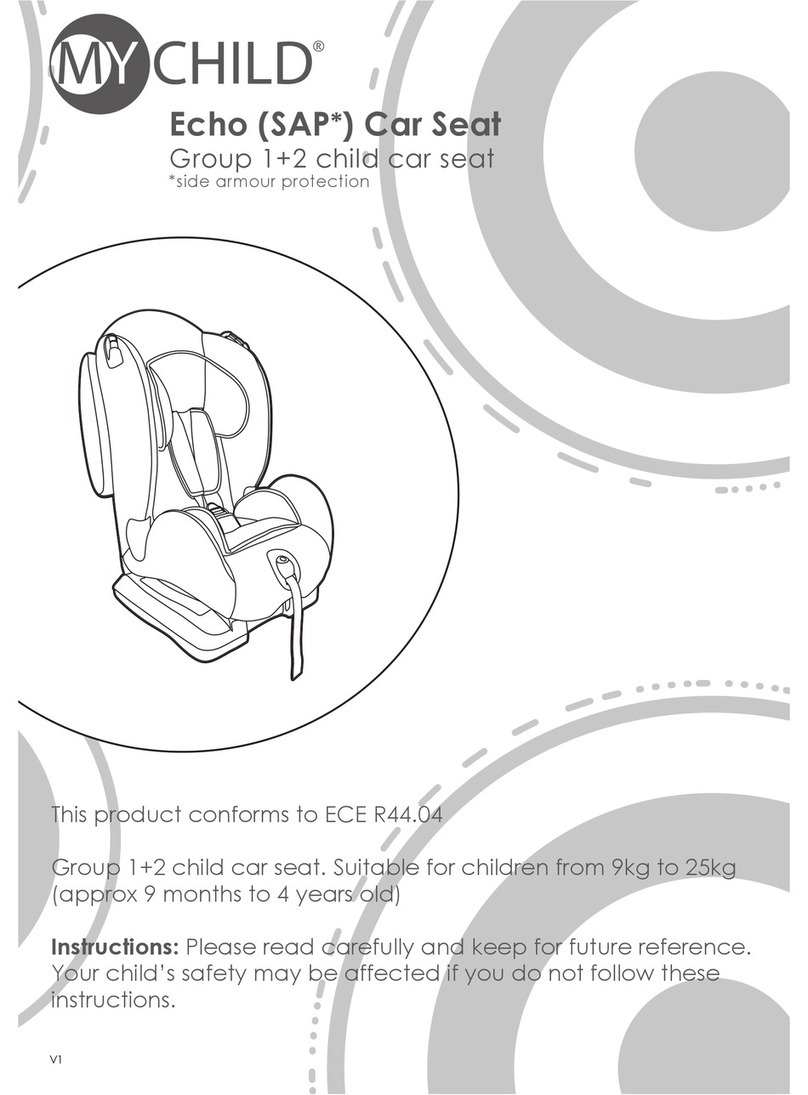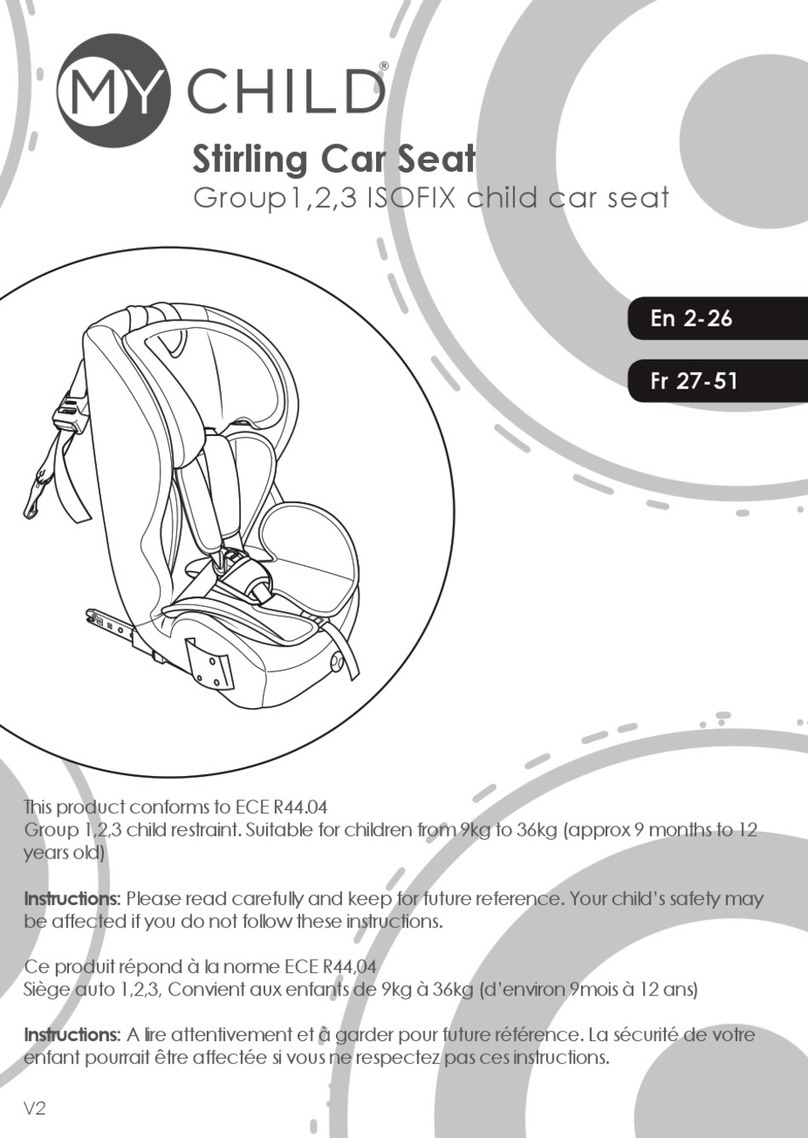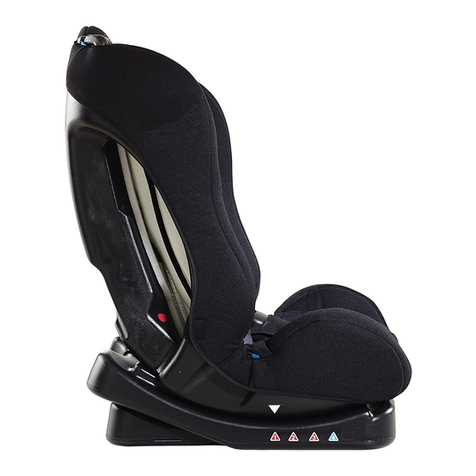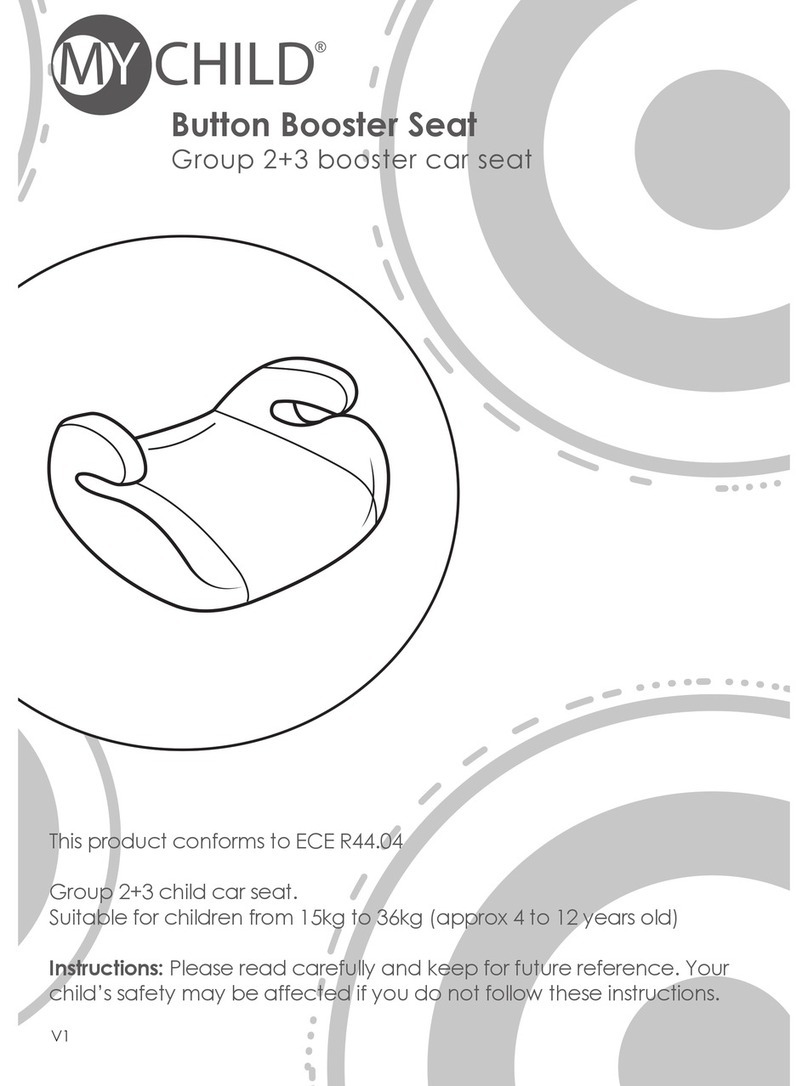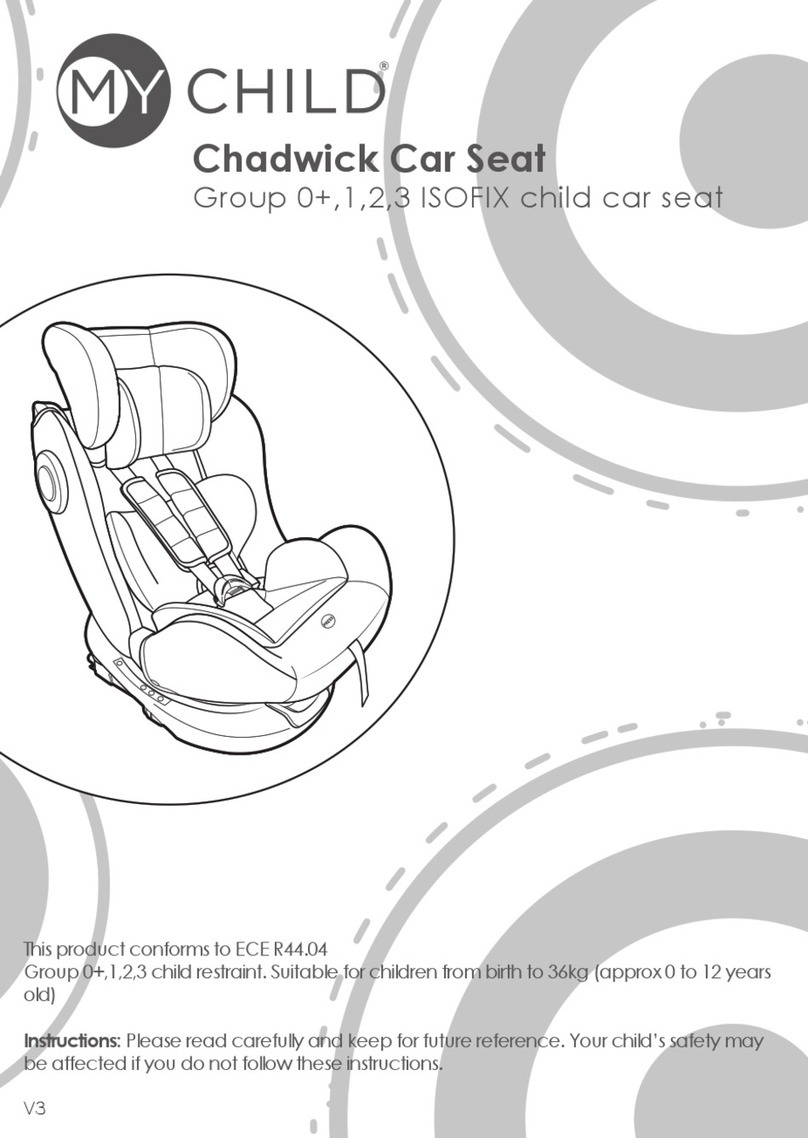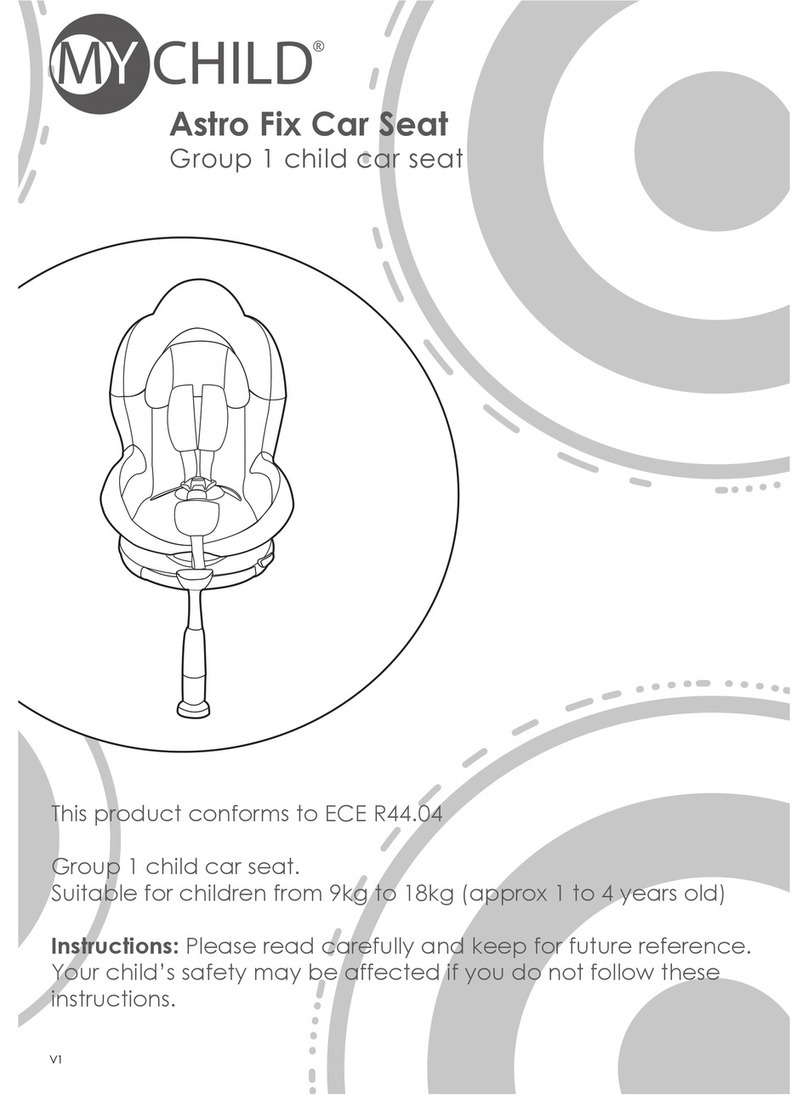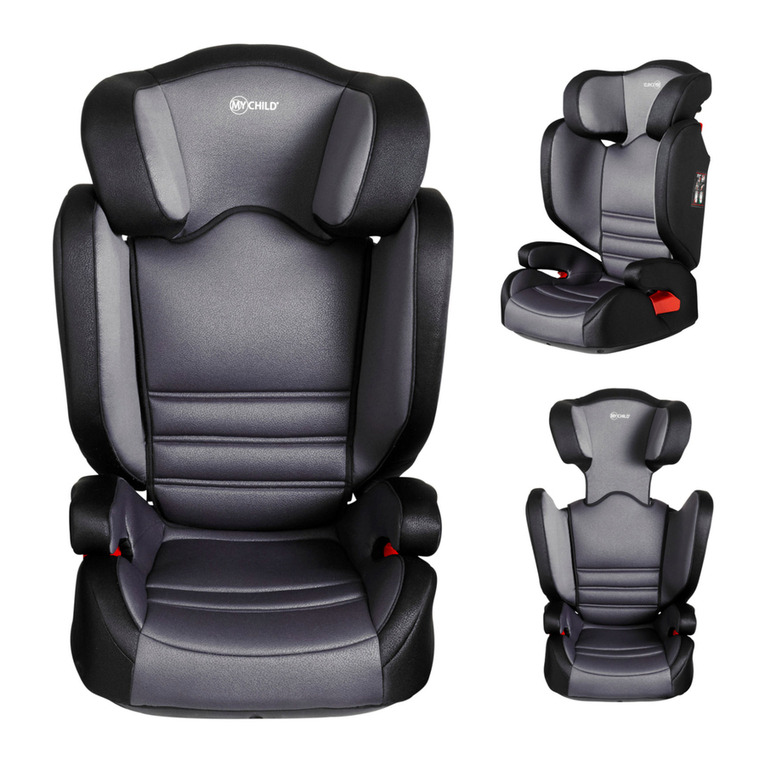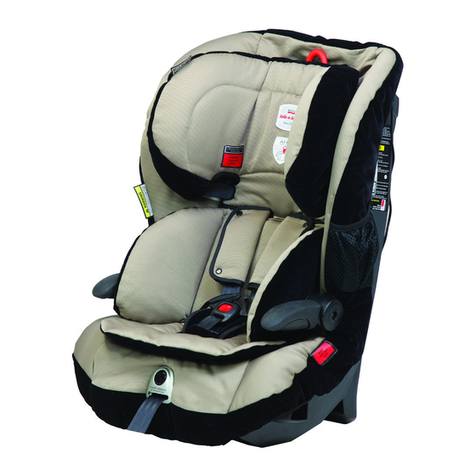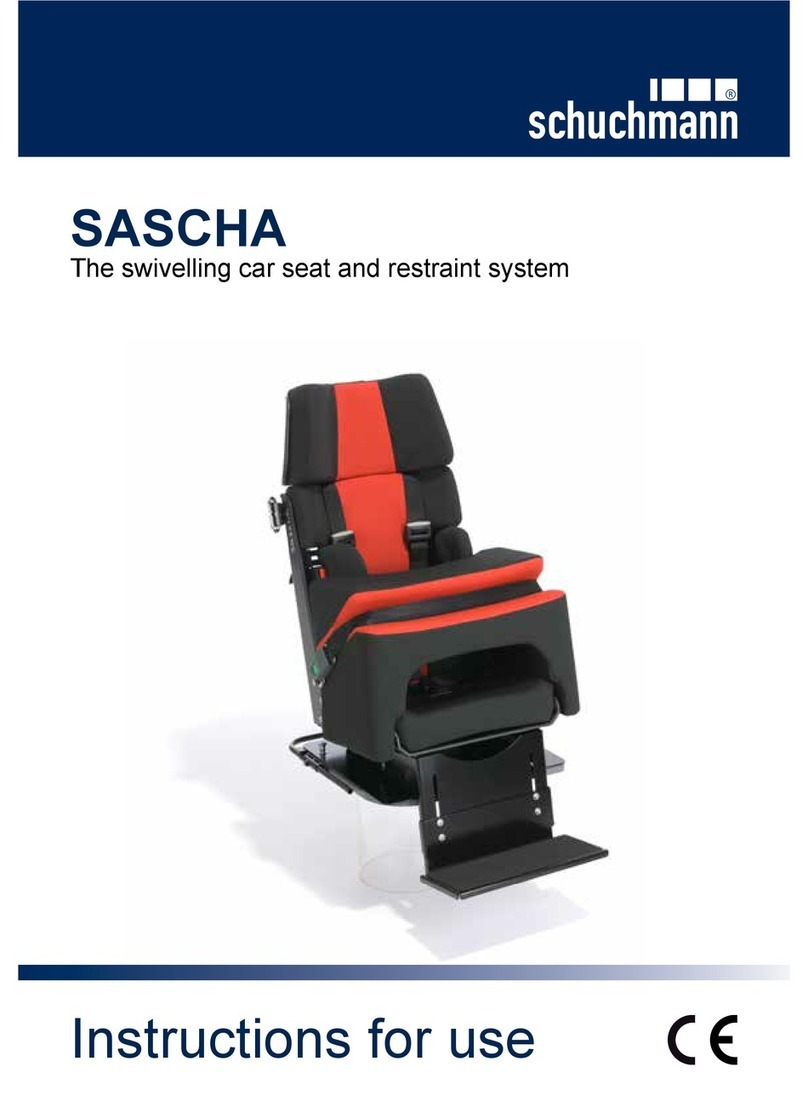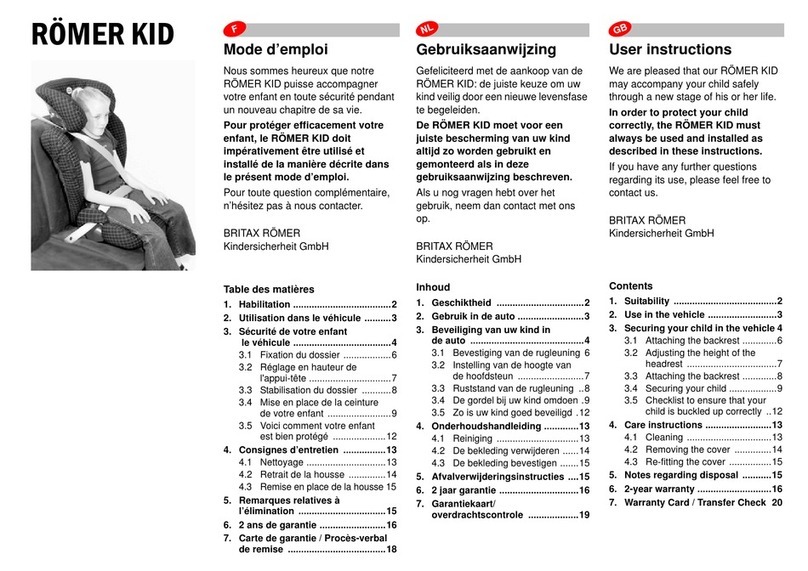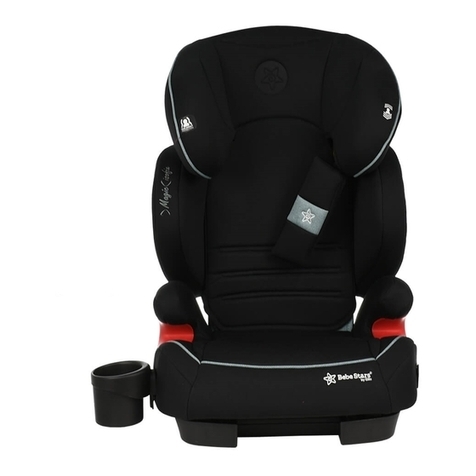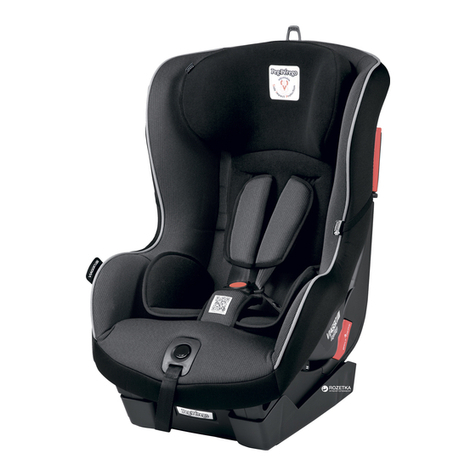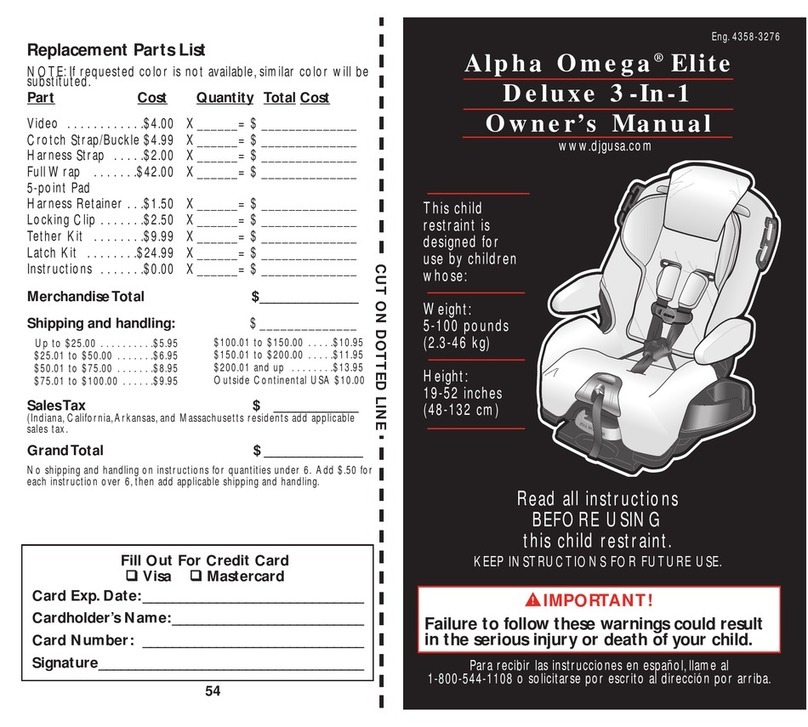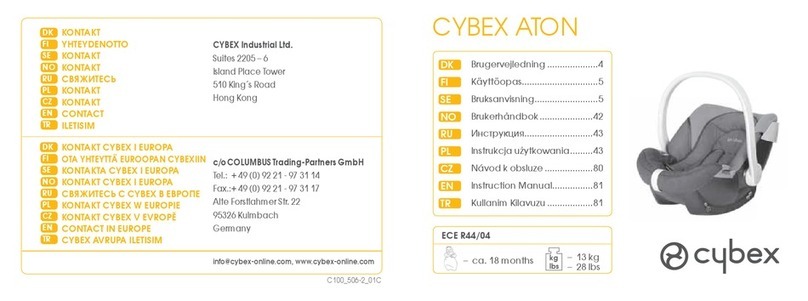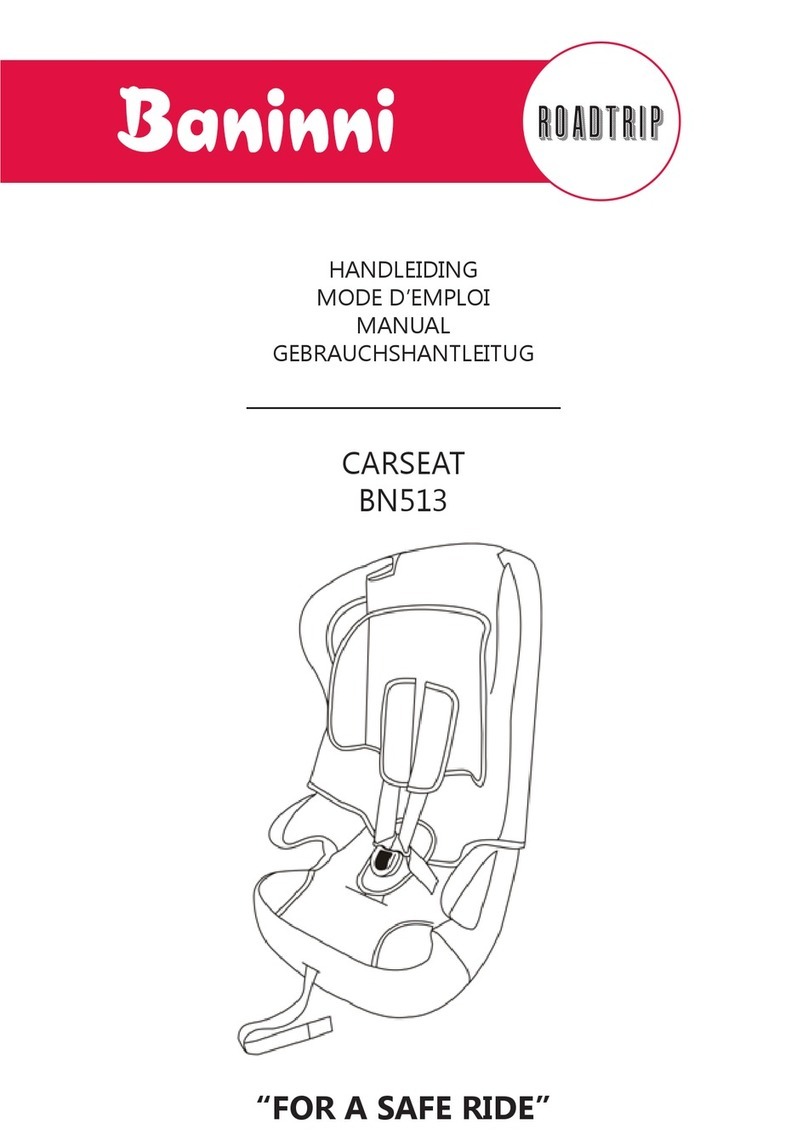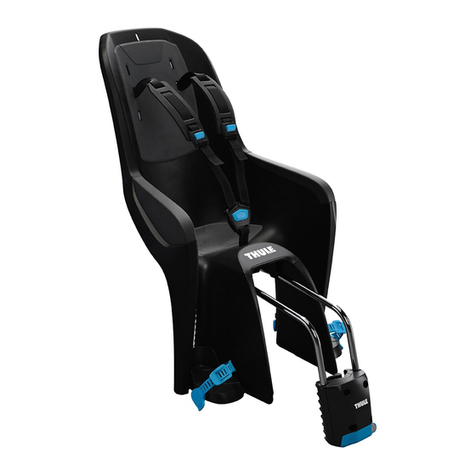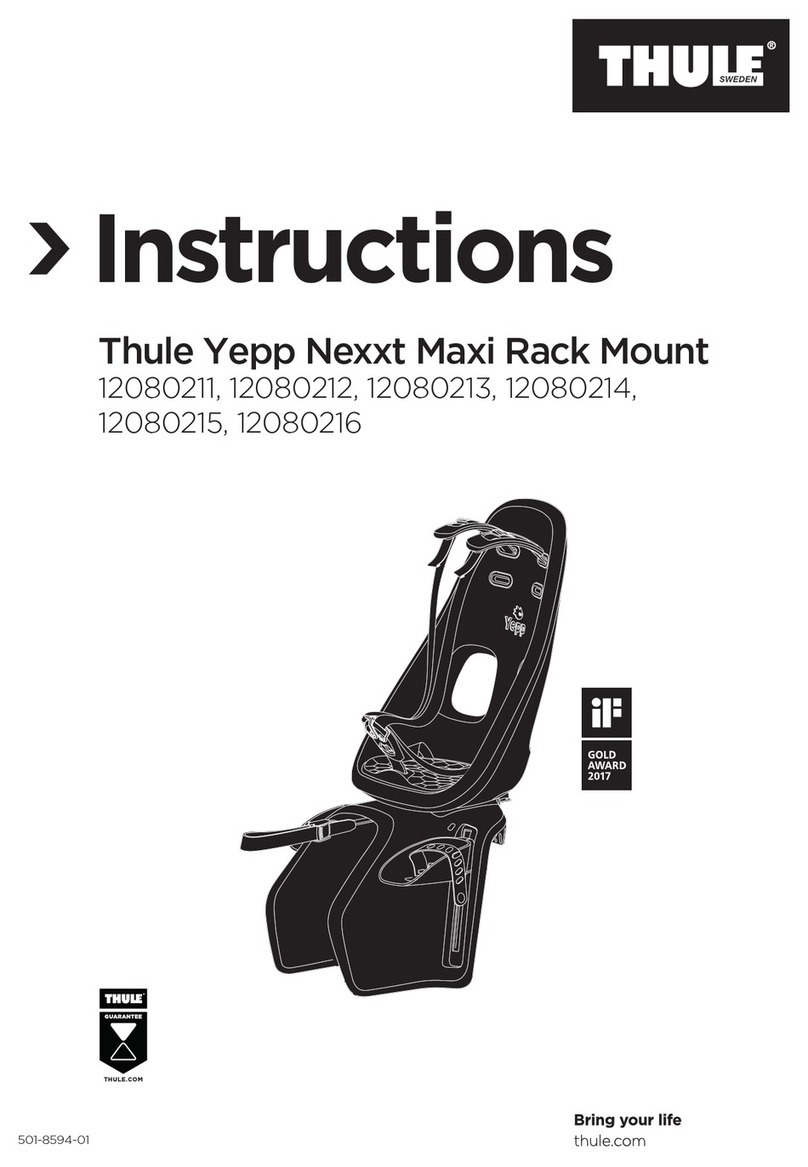page 2
EXTREME HAZARD
NEVER USE IN FRONT PASSENGER SEATS EQUIPPED WITH AIRBAGS (SRS)
THIS CAN INCLUDE REAR PASSENGER SEATS THAT ARE EQUIPPED WITH AIRBAGS*
*Consult car manufacturer for suitability. Children’s bodies are not able to withstand the forces
exerted on them by a deploying air-bag
When Using the Child Car Seat
Seatbelt
Warning: Make sure that the child car seat is placed somewhere so that rigid items and
plastic parts do not become trapped in doors or movable seat units when the seat is in
everyday use.
Warning: Always use the vehicle’s door child safety lock system, if one is available, to
make it impossible for the child to open the car doors from inside.
Warning: Allow the child a break during long car journeys and make sure they don’t
get out of the car unaided and without supervision.
Warning: The child car seat must be tted securely to the passenger seat. Ensure that it
is not loose or wobbly after you have tted it. If it is loose, re-t it.
Warning: Ensure that the child car seat is secured to the car seat at all times - even
when not in use.
Warning: The child car seat must not be used without its original cover. The original
cover is essential for the safe operation of the child car seat.
Warning: Stop the car at regular intervals to check that the child car seat is in the
correct position and that both the car seatbelt AND the child car seat harness (if tted)
are still taut and latched.
Warning: In the event of an emergency it is important to be able to release the child
quickly (as dened by British Standards). This means that the seat buckle cannot be
fully tamper proof and you should actively discourage your child from playing with or
using the buckle.
Warning: If you travel with passengers using both the front and the rear passenger
seats, the lighter occupants should be in the rear and the heavier occupants in the
front.
Warning: If you have no option other than to put your child car seat on a rear
passenger seat next to side airbags:
- Consult with your vehicle manufacturer for side airbag details. It may not be safe.
- Make sure your child does not lean into the area immediately around the airbag.
Warning: Do not place anything under the child car seat (e.g. a towel or cushion) as
this could affect the performance of the seat in an accident.
Warning: Avoid winter clothing bundling - Bulky clothing can lead to incorrect harness
tightening. In an accident, the child can slip right out of the extra padding - and thus
out of the seat. Let the car warm up or cool down prior to placing your child in there if
possible. If your child is cold, place a blanket over the top of the harness.
Warning: NEVER use any load bearing contact points other than those described in
these instructions or marked on the child car seat.
Warning: Ensure that the lap section of the seatbelt or harness is worn low down, so
that the pelvis is rmly engaged.
Warning: Make sure that ALL the passengers in your vehicle have their seatbelts
fastened, as unrestrained people can be very dangerous to the child in an accident.
Warning: NEVER use a seatbelt routing scheme that differs from these instructions.
Warning: The lap and diagonal seatbelt (and harness if tted) must be used at all times
when your child is in the child car seat.
Warning: Make sure that there are no twists in the seatbelt.




















